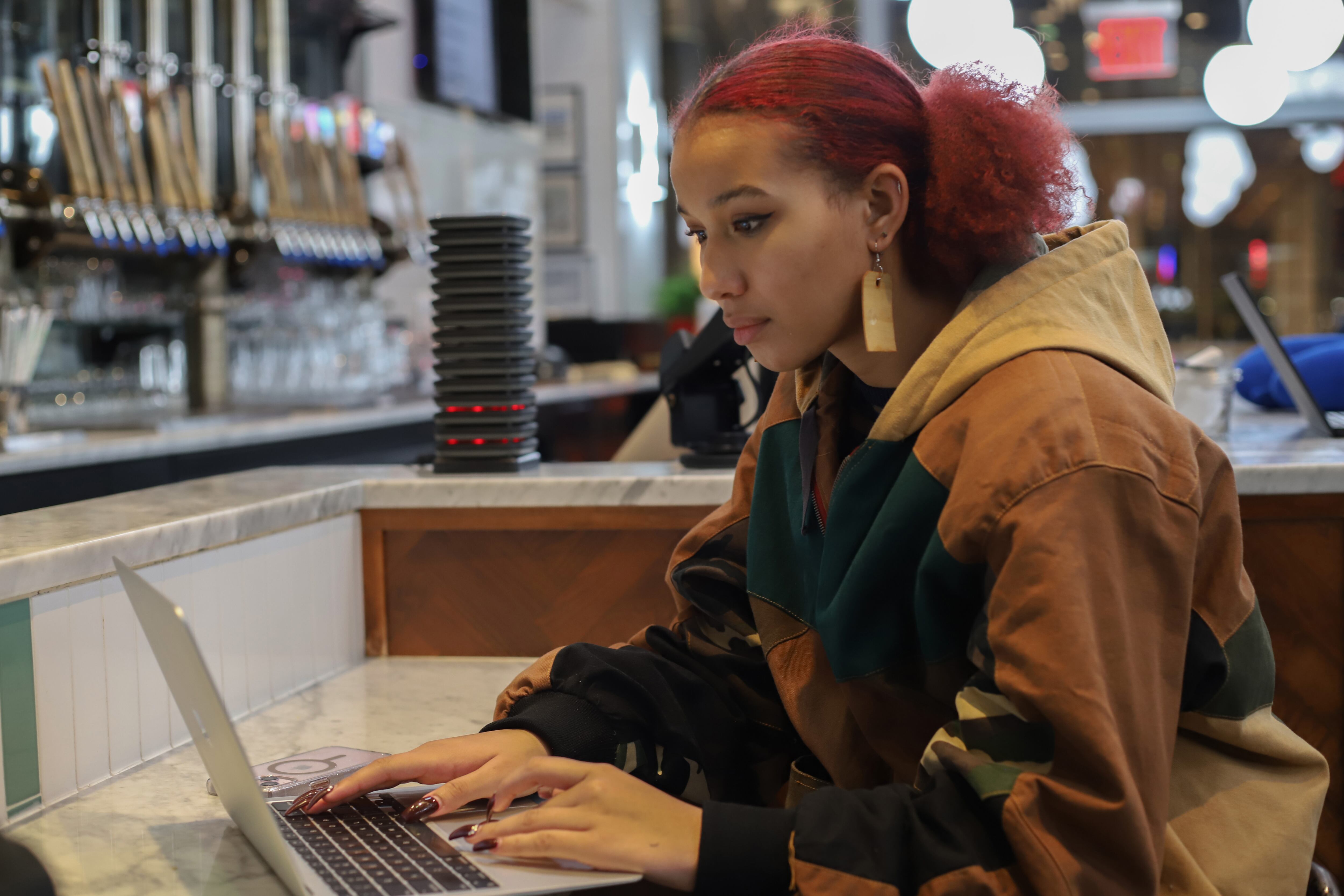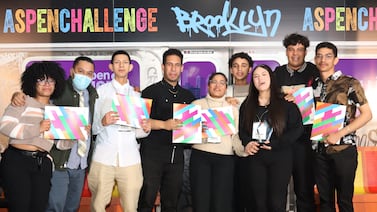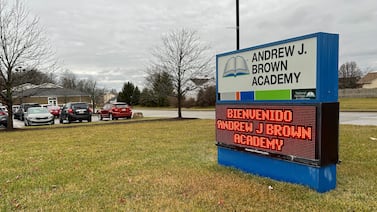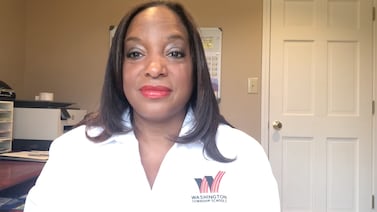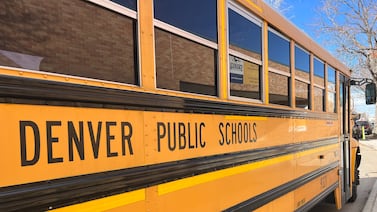This story is part of Hard Lessons, the NYCity News Service’s look at what city schools have learned from the pandemic.
When Gabrielle Cayo started at Brooklyn Tech — one of New York City’s highly-selective specialized high schools — she noticed some of her classmates and teachers treated her differently.
Cayo, now a senior, felt many at the school — where the student body is predominantly Asian and white — “didn’t take Black students seriously.” Microaggressions were common, she said.
Black students “were treated like an ‘other’ and treated like we were less than every other student,” Cayo, 17, said in an interview. “That made me feel like there needed to be changes.”
Cayo threw herself into leadership opportunities at her school, like serving on the school’s equity team and joining the Black Student Union, of which she is now president. She was appointed to the Chancellor’s Student Advisory Council, which advises on citywide education policy. In her junior year, the council elected her to serve as one of two student representatives on the Panel for Educational Policy (PEP), New York City’s school board.
The catch? Student representatives can’t vote.
The missing element
The push for students to serve on school boards is gaining traction nationally. Over the past five years, eight states have added at least one student member on their state board, created a student advisory council, or a combination of board membership and advisory council. Fourteen percent of the nation’s largest school districts now have a student serving on their boards. But the vast majority of these young people — 86% of student reps, according to a 2020 survey — do not have voting rights.
Students like Cayo said they must convince the adult panel members to vote for their causes, creating a system where differing generational perspectives can clash. Nationally, battles over school safety, critical race theory, and sex education have reached a fever pitch. In New York, debates about mental healthcare, metal detectors, and school admission policies are top of mind. Students say that their perspectives — as the group most directly affected by the education system — need to trigger real and concerted action.
“There is a disconnect between the people who are voting and the people who are actually stakeholders,” Cayo said. “It feels like you go and speak about the issues and just kind of cross your fingers that someone was actually kind of listening to you.”
Adult PEP members, like Kaliris Salas-Ramirez, the Manhattan borough president appointee, and Tom Sheppard, the vice chairman, agree that students should have voting rights on policy decisions. Salas-Ramirez said she had seen some of her fellow panelists dismiss the students’ proposals when it is clear what they are asking for impacts them.
“Some of my colleagues in that space are like, ‘Oh, they’re so cute’ and completely minimize their experiences and what they would like to see,” she said.
The Panel for Educational Policy was created by then-Mayor Michael Bloomberg in 2002 after he gained control over the city’s schools from the State Legislature. Tasked with advising the city’s school chancellor on educational policy matters, the panel recently grew to 23 voting members: 13 appointed by the mayor, five appointed by the city’s borough presidents and five by the presidents of the city’s Community Education Councils (CECs). The state law expanding the panel included no additional student members.
The panel votes to approve city Department of Education contracts with external vendors, budget projections, and major decisions like school closures. It also votes on systemwide rules for public schools, from cell phone, admissions and attendance policies to employee hiring and school budgets. But critics say that since the mayor has the power to appoint —and fire — the majority of its members, the panel is more of a rubber stamp for the city government than a true way to balance mayoral power.
Cayo and Reana Akthar, a student who served on the panel until August, are arguably the most powerful teenagers in New York City public schools. But they have struggled to make headway on the panel.
Akthar, whose seat on the panel is still unfilled, petitioned for greater teacher diversity and better policies around mental health care for students. Cayo has focused on curriculum reform so that students see “more of their culture in the books and the history that we learn,” and increased hiring of guidance counselors to help students prepare for college and the job market. Both think their ideas have failed to translate into tangible action from the PEP.
“When you look at the agendas of the DOE and Chancellor Banks, it’s completely full speed ahead on magnet schools, instead of listening to what me and [Akthar] have been saying for the last two years,” Cayo said. “We want more redistribution of the money that is going into these schools to the neighborhood schools around them.”
Without voting power, the student representatives said they have to trust that the voting adults listen to them carefully and consider their ideas. Instead, the students said they often feel tokenized by the adult members.
“I’ve never felt like what we were saying could then become policy,” Akthar said. “They don’t really want to hear what we actually have to say.”
Taking youth voices seriously
Jasmine Cobham, a senior at Medgar Evers College Preparatory School in Brooklyn and a youth advocate at Teens Take Charge, a citywide coalition of high school students that advocates for anti-racist educational policies, said tendencies to ignore student perspectives extend outside of the panel.
“I feel like a lot of people don’t take students seriously,” Cobham said. “They think, ‘Oh, we’re too young, we don’t know what we’re talking about.’”
Cayo and Akthar said the number of student representatives should also increase to give a more diverse group of students representation. The DOE should also provide a full support team for student members, adjust meeting times to accommodate students’ school schedules and foster an environment in meetings that is appropriate for teenagers, they added — suggestions supported by Salas-Ramirez and Sheppard, the only PEP members to respond to a request for comment.
When asked about giving student PEP members the right to vote, the DOE said in an emailed statement that “student voice should be at the core of all we do” and that inviting students into the decision-making process is “vital.”
“Student voice is invaluable as we work to reimagine our system to better serve the needs of our young people, school staff, and community members,” said the department’s spokesperson Suzan Sumer. “It is a priority of this administration to give students a seat at the table.”
The state law that governs the panel is set to expire in less than two years, giving legislators an opportunity to make changes before potentially extending the law. State Sen. John Liu (D-Queens), chairman of the state’s New York City Education Committee, said the legislature will “continue to monitor” the panel to see “what additional changes, if any, should be considered.”
“Giving student members a vote deserves more discussion that must include how best to reflect the interests of our student populations while still accounting for their legal status as minors,” Liu wrote in an email.
Ultimately, Cobham said adults in power have to recognize that students are the ones directly affected by their policies. “We’re the ones who are actually in the school.”
Lucy Papachristou contributed.


